In today’s article, veteran police trainer Mike Boyle offers suggestions on training for movement and shooting. This article is for informational purposes and is not intended to replace in-person instruction with a qualified instructor. We always encourage practicing in a distraction-free and safe location, following all necessary safety protocols.
Serious students of defensive pistolcraft recognize that real-life armed encounters are very different from what you experience on the range. This is especially true when you compare reality to the typical police qualification course with a large, unobstructed target, known distances, generous time frames and predictable patterns.
Another element often absent in traditional firearms training is movement. In the unforgiving real world, both you and the threat are likely to be moving. This is yet another dimension that a lot of people simply have not prepared for.
When I received my initial firearms training, the FBI-inspired Tactical Revolver Course (TRC) was the standard often used to assess officer proficiency. On the command, we moved quickly from our location to the designated firing station to complete the string in the allotted time. For example, one would move from the 25-yard line to the 15-yard line, slam on the brakes, draw, and fire the appropriate number of rounds. While it may have elevated your heart rate ever so slightly, it truly didn’t give us any insight into the type of movement likely to unfold in a gunfight.
A few years later when I became a trainer, I recognized that movement was often a component of real-world scenarios and began to incorporate it into the training I conducted. At the time, there wasn’t a great deal of information to draw from and many police ranges frowned upon any sort of movement with a gun in hand. Instead, I had to draw on experiences from competitive, practical shooting where movement was often part of the script.
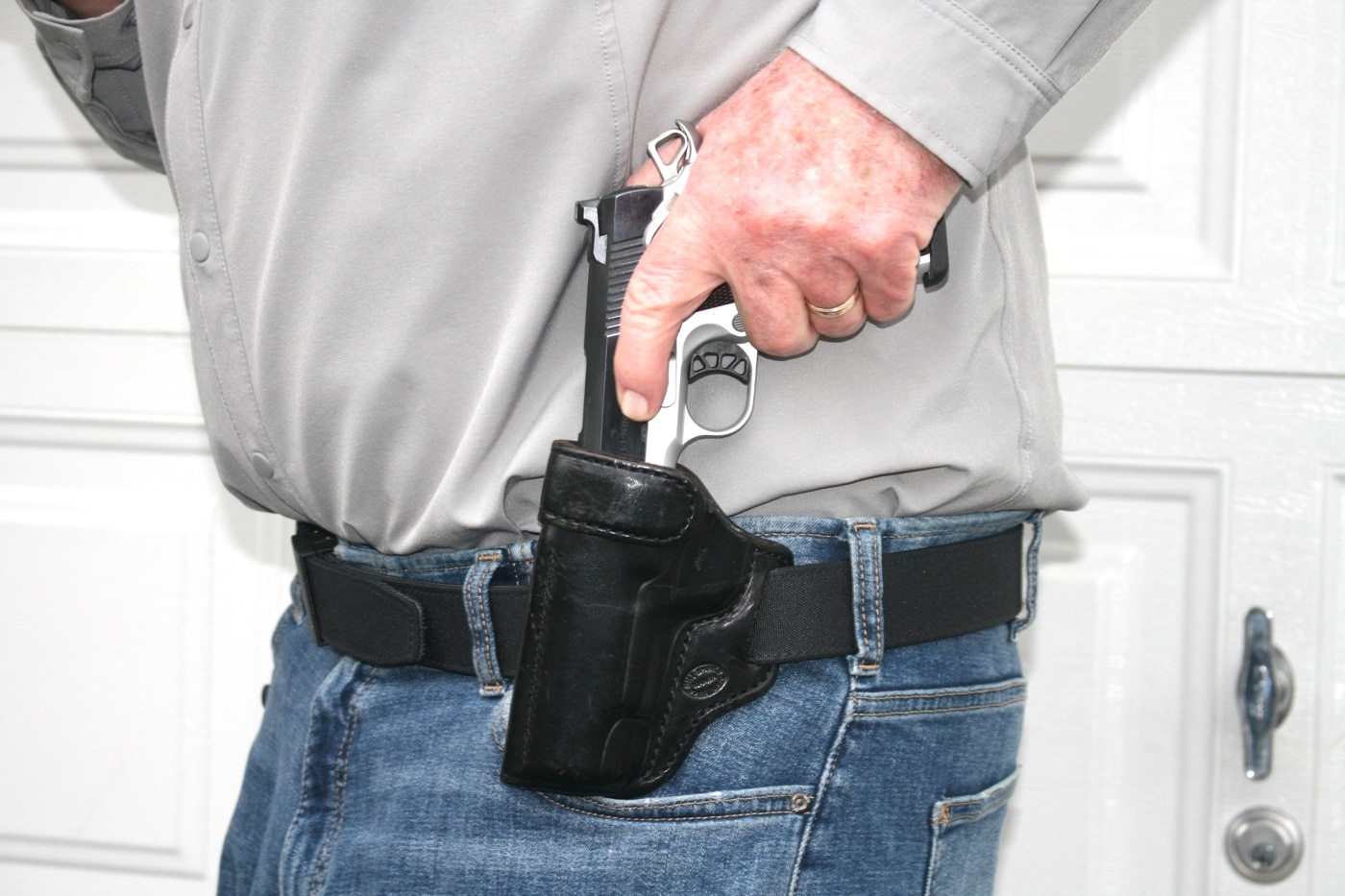
So, should movement be an element in your training? You bet! I’m not suggesting that we need to engage in any elaborate movements or move and shoot from multiple locations such as an IDPA match, but some simple footwork to gain a position of advantage could be a lifesaver.
How about shooting while moving? Although my thoughts have evolved on this over the years, there may be some scenarios where an armed citizen can simultaneously move, shoot and still achieve effective hits.
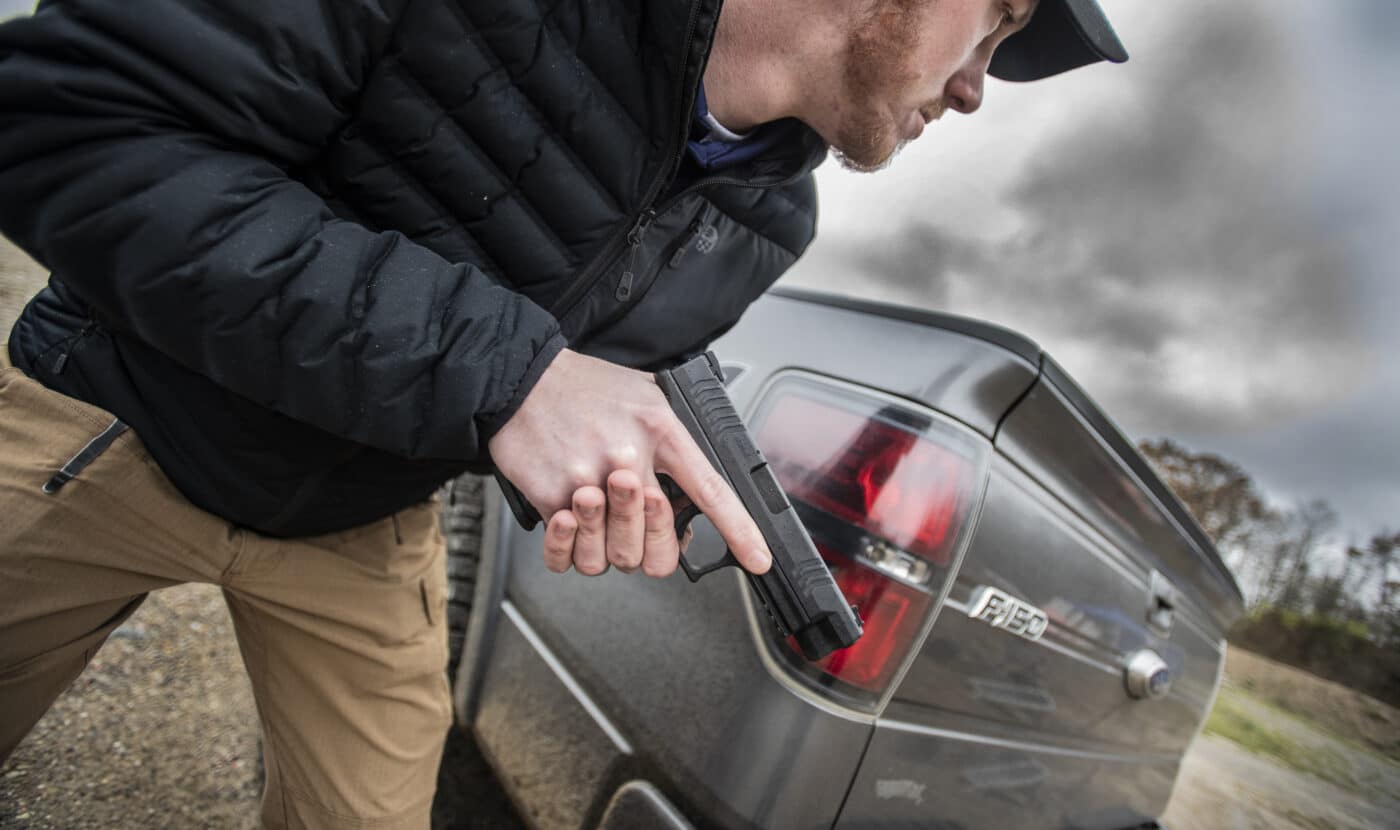
Shooting on the Fly
In the distant past, I attended some instructor-level training at a big-name school on both rifle and submachine gun where shooting while moving was a major component of the curriculum. The majority of the attendees were SWAT operators who may on occasion need to quickly go through doors to engage bad guys.
We spent hours mastering the “Groucho Marx walk” at different speeds while moving toward the target and in fairly short order, and all hands were able to place their shots in the high-value scoring area. All firing was done on the move, and we were discouraged from stopping and firing.
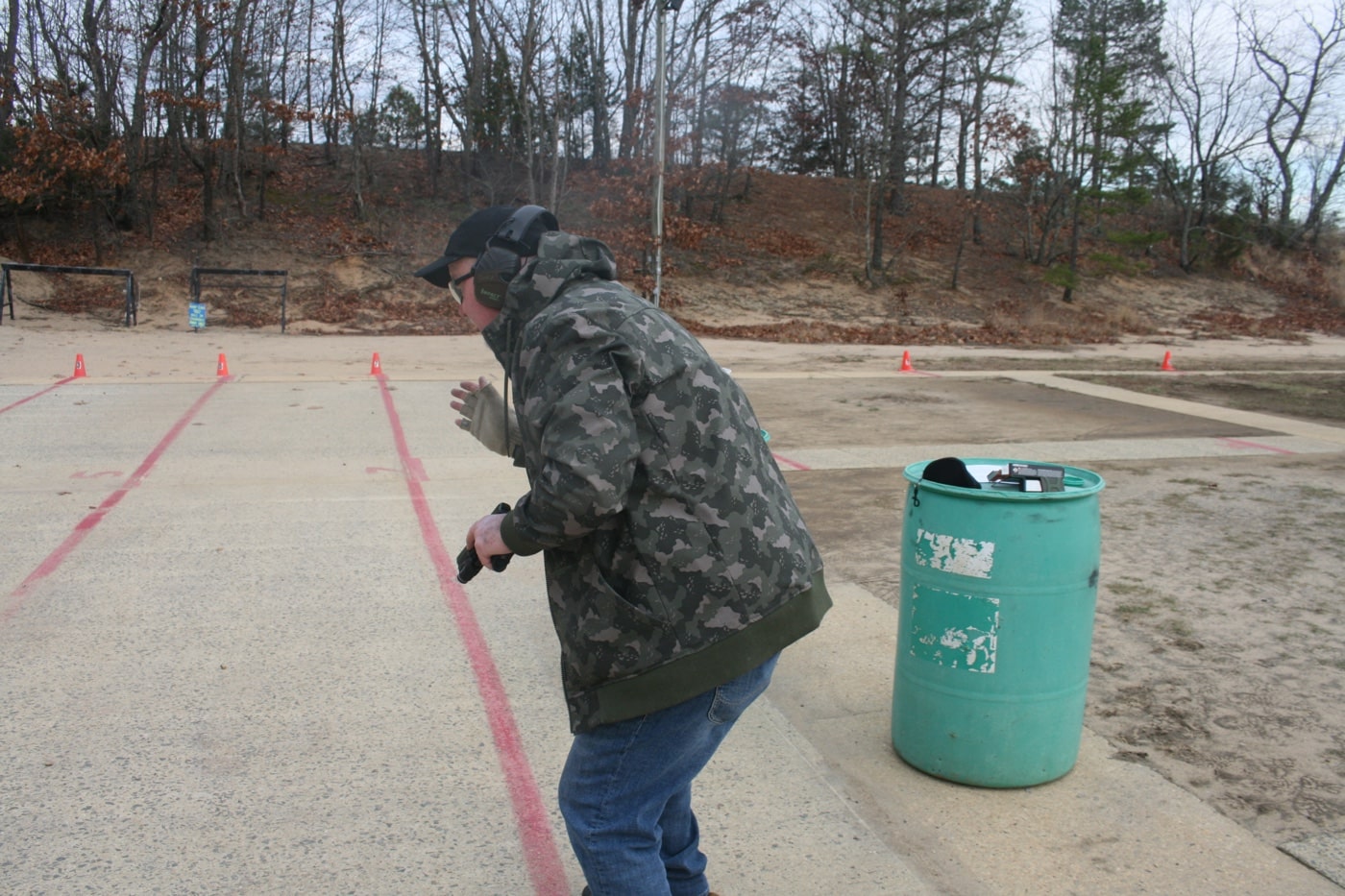
I’ve also participated in “box drills” where, as the name implies, movement was in a box pattern with forward, rearward and lateral movement. These drills were conducted with either a solo shooter or a two-man team and often included judgmental shooting where the instructor designated a specific target and you had to engage it while moving. While this was all great fun, I have to question its application in the real world. There may be some value for the highly trained tactical operator, but for the armed citizen this might be best categorized as entertainment.
As responsible citizens, it is unlikely we will be going through a door anytime soon to deal with a roomful of bad guys. But could we find ourselves in a scenario where we are moving to a position of advantage with our gun in hand and a lethal threat appears just a few feet away? Do you shoot while you are still moving, or stop and engage? It all depends!
I’m pretty confident in my ability to hit a close-range threat with a pistol while moving. Should my problem be moving or be outside of conversational distance, that changes everything. If I can’t obtain a proper index on the threat with my pistol and be assured of a hit, I have to go to Plan B.
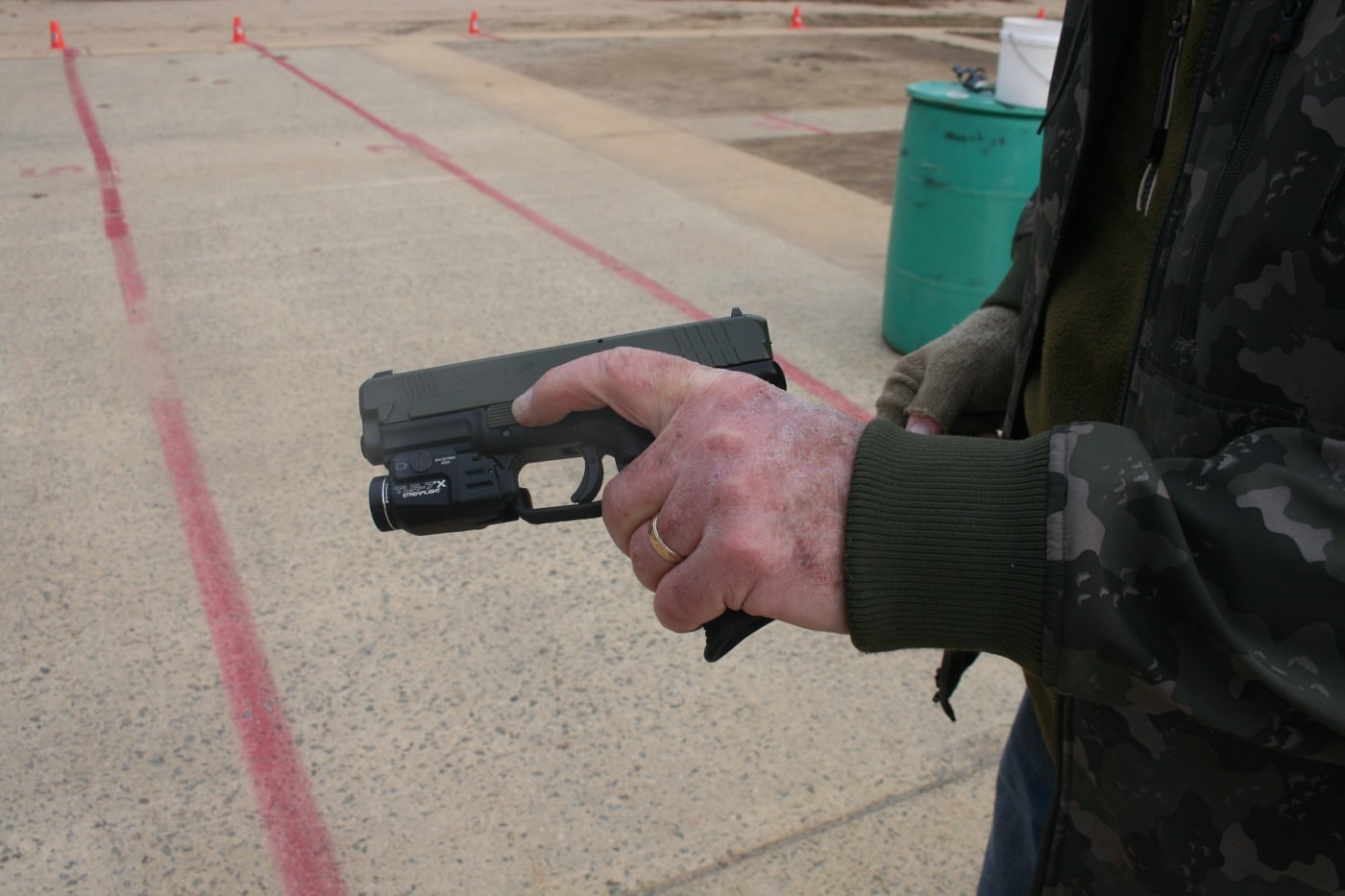
Suffice it to say, shooting while moving is hardly an optimum situation. Making decisive hits on a threat when subjected to life-threatening stress is difficult enough from a stationary position but movement further complicates the issue. However, under certain circumstances, shooting on the fly may be tactically sound. For example, you may be moving to cover and a threat appears just a few feet away. A delayed response on your part could prove fatal.
Can you still deliver effective hits while moving? I would submit that real-world movement, particularly for the armed citizen, is going to be lateral or on an oblique angle. The trick to hitting while moving is minimizing “the bounce” and getting a reliable index on the target. By rolling the feet heel to toe as you move and using the knees as shock absorbers, you can get the sights on target. There are no guarantees in the harsh real world, but unless you can hit with a high degree of certainty, don’t take the shot.
With the limited training opportunities afforded, most folks will find they can move, shoot and hit at very short range, but the game changes once distance increases to just a few yards or the threat moves. In that case, most of us would be far better served stopping, driving the gun to eye level, and getting hits on our assailant as quickly as possible
Move, Then Shoot
Our primary goal in any sort of armed encounter is not to get shot or cut. Getting off the assailant’s angle of attack may very well throw a monkey wrench into his plan and buy you a second or two to react and establish control.
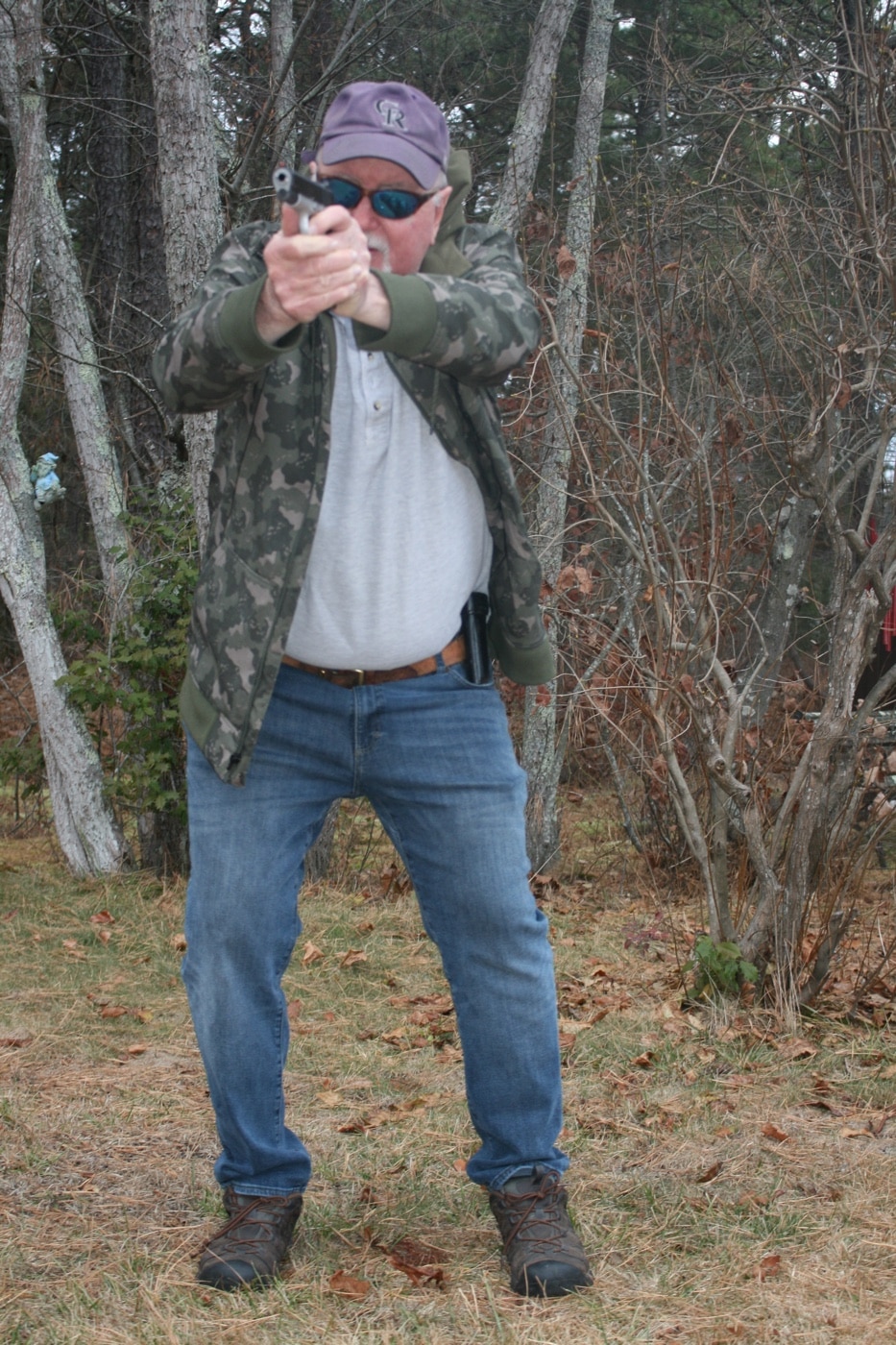
A great many attacks, particularly those on responsible citizens, are a surprise and there is little forewarning of danger. This is particularly true in urban environments where all sorts of unknown entities are in close proximity.
To prepare for this eventuality, a little dry practice (empty pistol, check it twice!) is in order. Work with your everyday carry rig and the type of clothing you normally wear and strive for an efficient, fumble-free drawstroke. Once you have all the kinks worked out, add a little movement. As you draw, take a quick step to the side as you drive the gun to eye level.
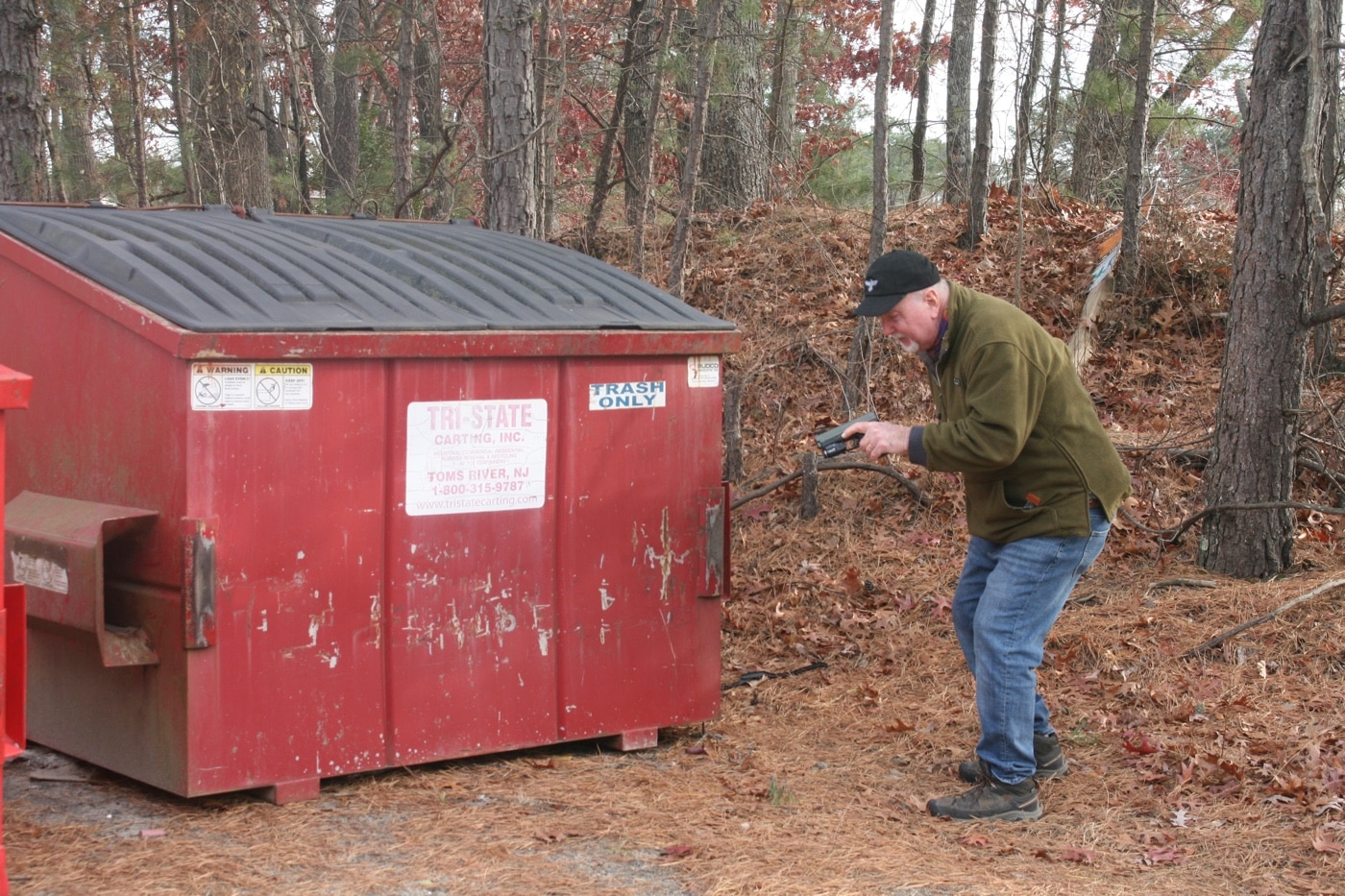
Once you have mastered the draw stroke with movement, it’s time to move to live fire. Start slow and gradually move up to game speed. One of the issues I regularly see with this is that some folks move way too slowly. You simply have to get out of that range mentality — safely! — and come to terms with the fact that fast movement may very well save your life. Someone is trying to kill you, so it’s best not to be there! As you become more confident, take multiple steps and add oblique movement to the mix as well. Again, safely!
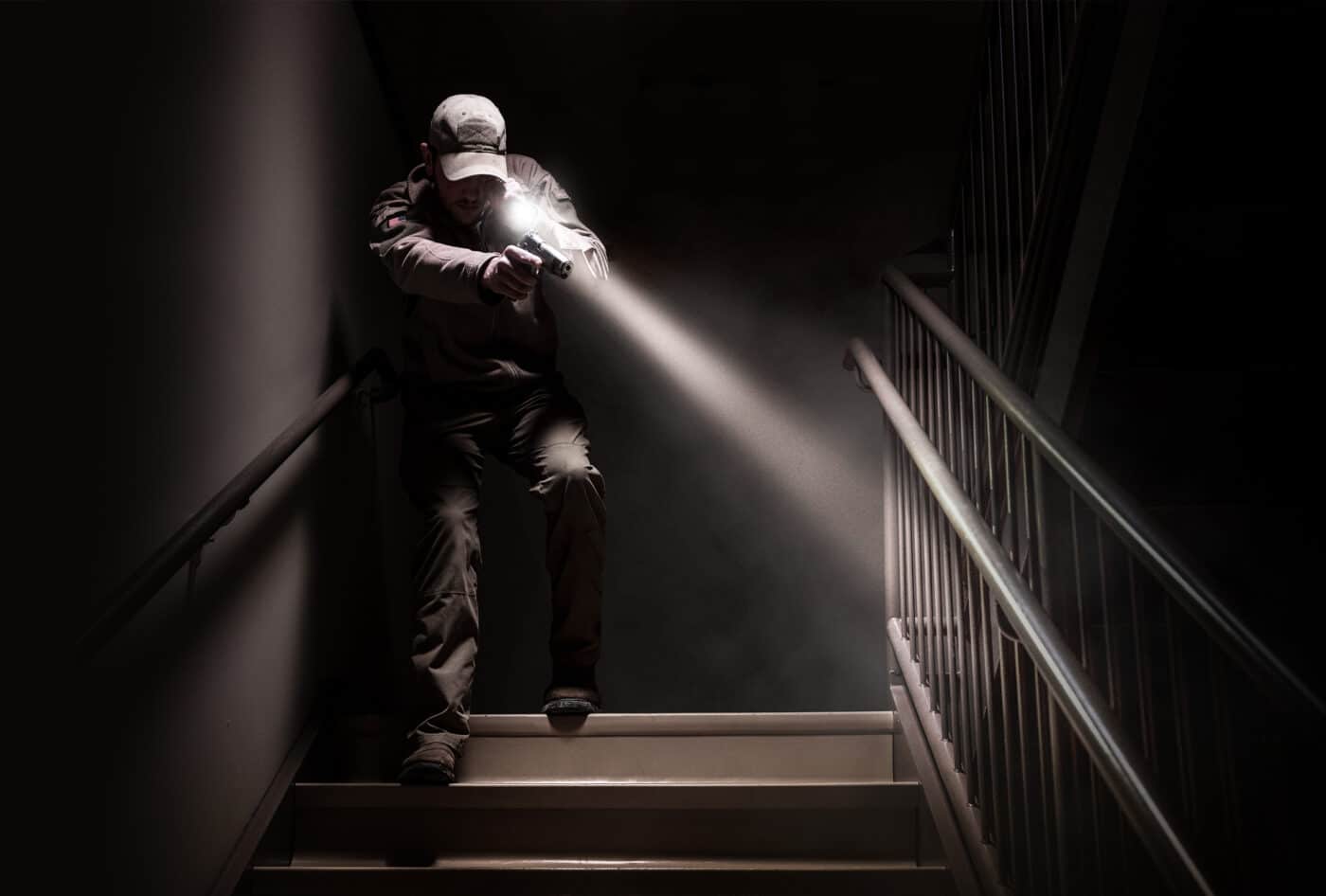
Productive Practice
I am fortunate that I have access to a range where I can do most anything as long as it is performed in a safe manner, and I recognize that most people are not so blessed. Clearly, movement with a gun in hand will likely set off the alarm at many public ranges. If that’s the case, consider purchasing an inert training facsimile of your carry pistol and doing some off range practice in a safe and secure location that incorporates movement. It may not be the perfect solution, but it beats the pants off doing nothing.
Conclusion
My usual practice regimen as well as the training I design for the outfit I work for regularly includes movement. Moving off the line of attack or toward cover is always part of the picture. One may have to engage a target at very short range while moving, or engage targets set a little further back from a stationary position.
I try to avoid track & field with a gun in hand as we so often see in some practical pistol competitions, and rather replicate scenarios we might encounter in real life. There may very well be multiple movements, but round counts and the number of targets are kept street-relevant. Emphasis is on fast, safe movement and making decisive hits.
Movement is an element of many armed encounters, and we would be foolish to ignore it. So, give it some thought and, if possible, add this dimension to your own practice regimen. Anything we can do to gain an advantage is worth exploring in my book.
Editor’s Note: Please be sure to check out The Armory Life Forum, where you can comment about our daily articles, as well as just talk guns and gear. Click the “Go To Forum Thread” link below to jump in and discuss this article and much more!
Read the full article here

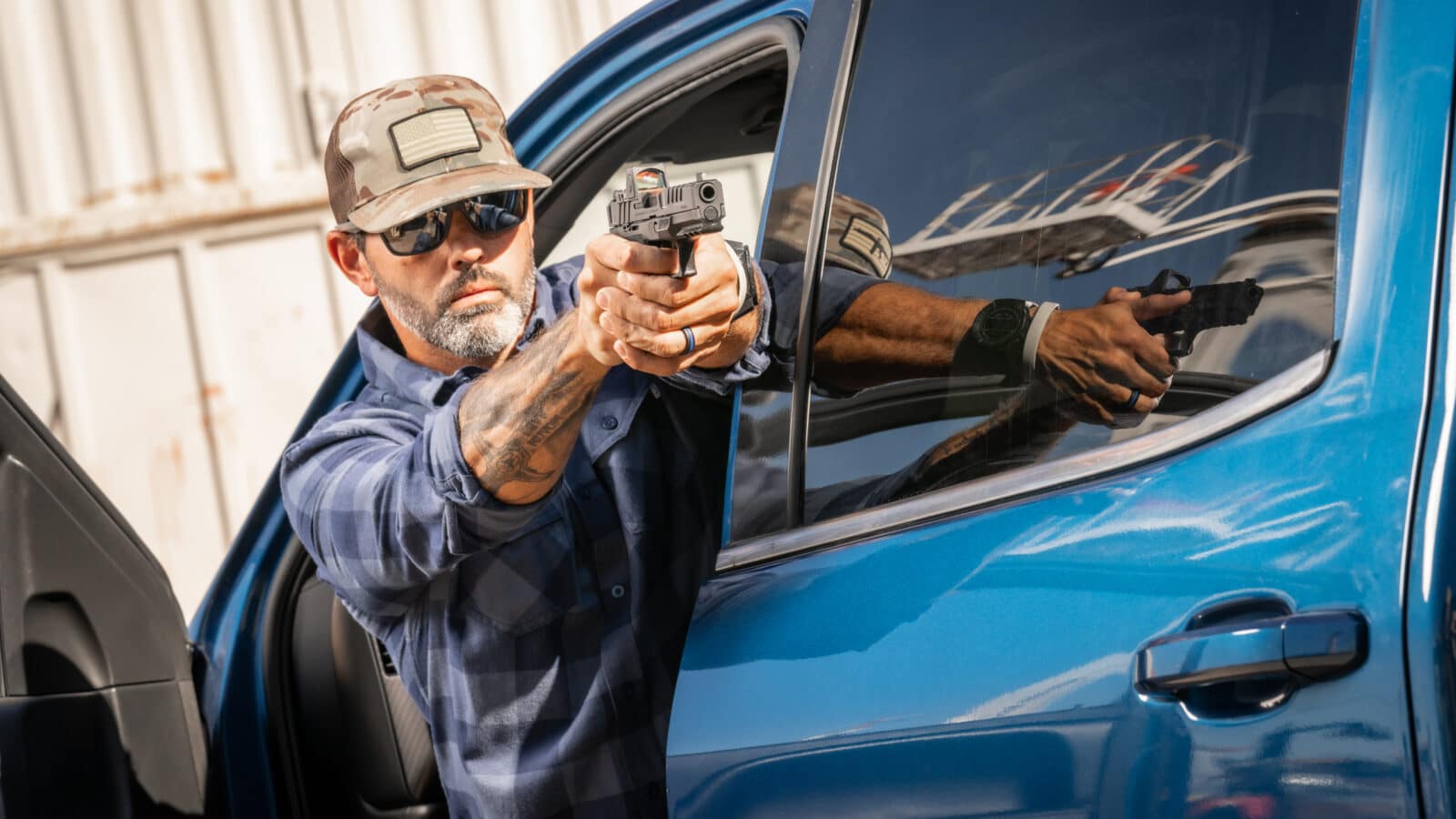
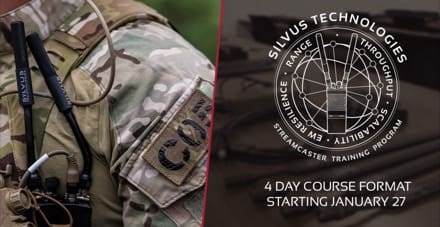

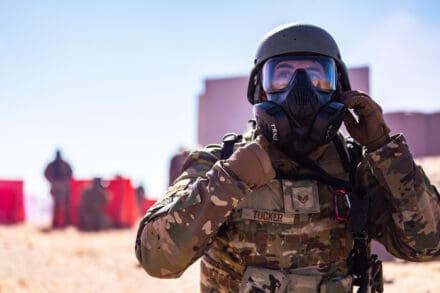
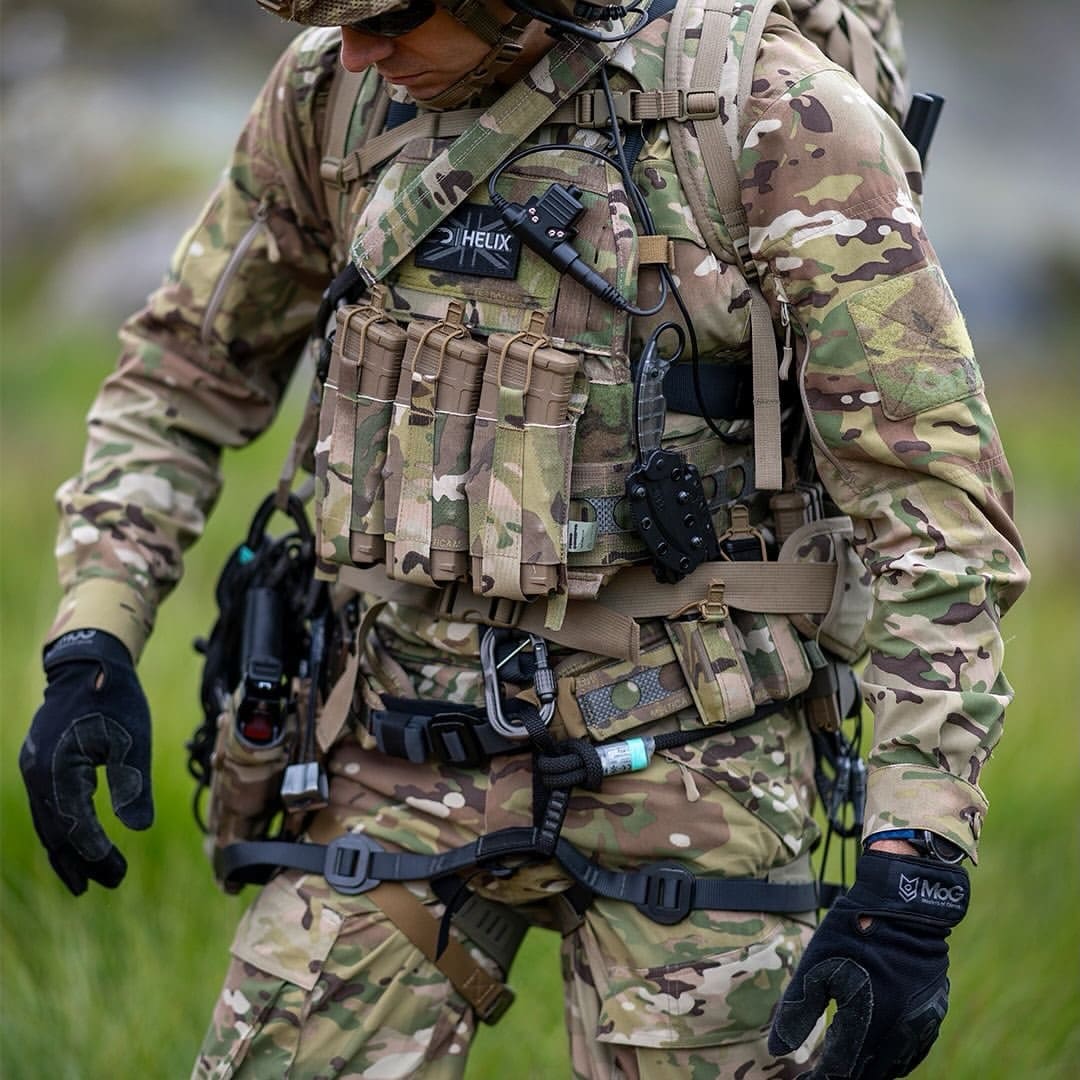
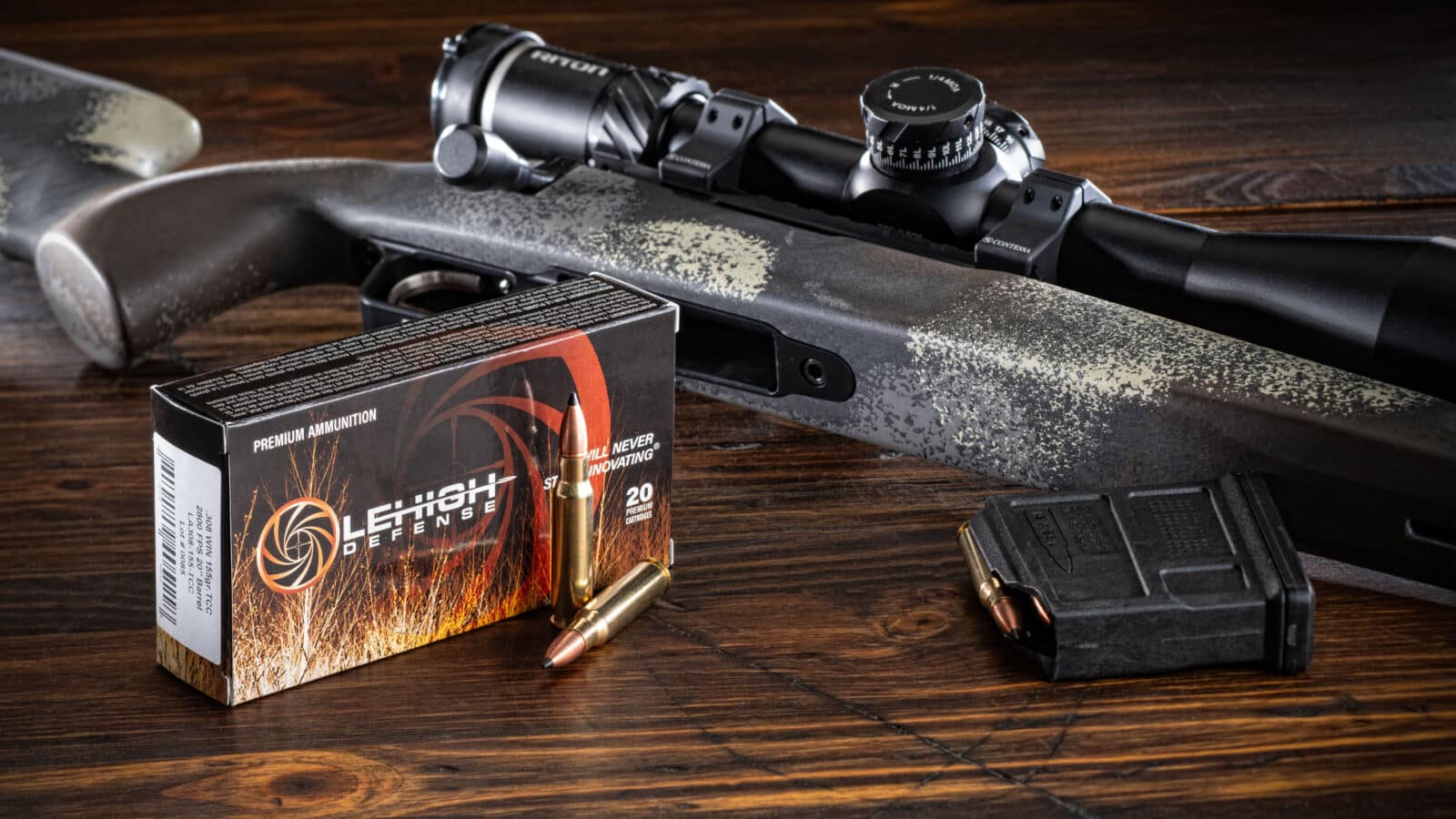
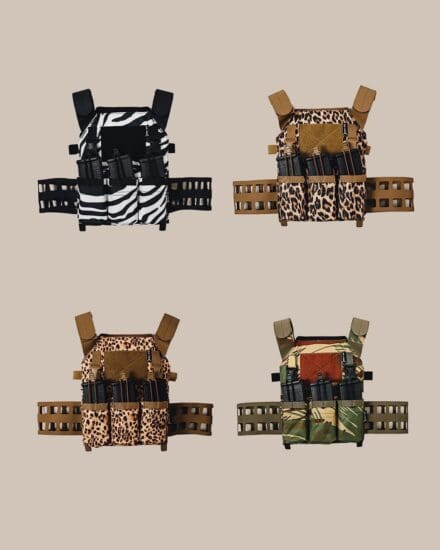
Leave a Reply